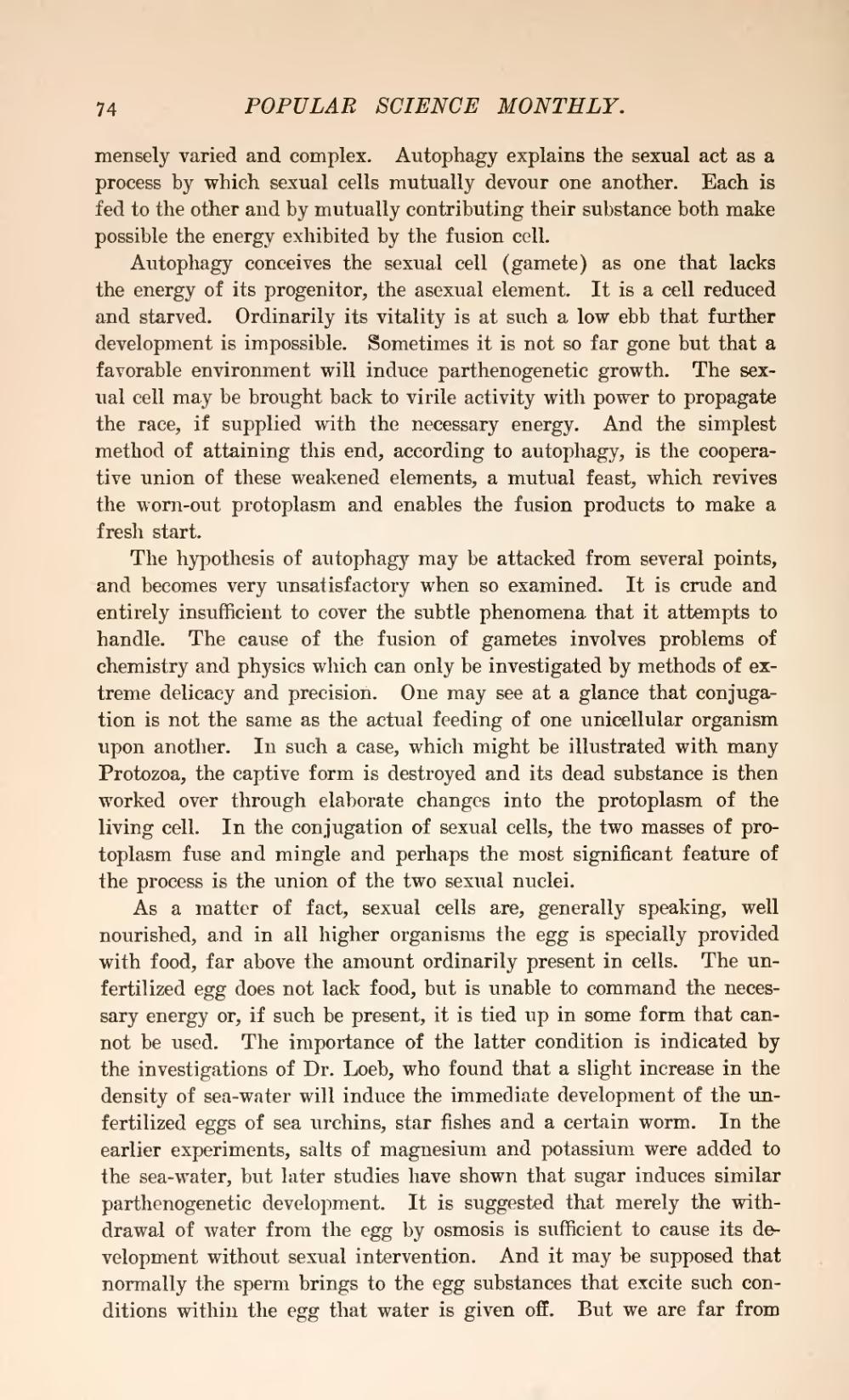mensely varied and complex. Autophagy explains the sexual act as a process by which sexual cells mutually devour one another. Each is fed to the other and by mutually contributing their substance both make possible the energy exhibited by the fusion cell.
Autophagy conceives the sexual cell (gamete) as one that lacks the energy of its progenitor, the asexual element. It is a cell reduced and starved. Ordinarily its vitality is at such a low ebb that further development is impossible. Sometimes it is not so far gone but that a favorable environment will induce parthenogenetic growth. The sexual cell may be brought back to virile activity with power to propagate the race, if supplied with the necessary energy. And the simplest method of attaining this end, according to autophagy, is the cooperative union of these weakened elements, a mutual feast, which revives the worn-out protoplasm and enables the fusion products to make a fresh start.
The hypothesis of autophagy may be attacked from several points, and becomes very unsatisfactory when so examined. It is crude and entirely insufficient to cover the subtle phenomena that it attempts to handle. The cause of the fusion of gametes involves problems of chemistry and physics which can only be investigated by methods of extreme delicacy and precision. One may see at a glance that conjugation is not the same as the actual feeding of one unicellular organism upon another. In such a case, which might be illustrated with many Protozoa, the captive form is destroyed and its dead substance is then worked over through elaborate changes into the protoplasm of the living cell. In the conjugation of sexual cells, the two masses of protoplasm fuse and mingle and perhaps the most significant feature of the process is the union of the two sexual nuclei.
As a matter of fact, sexual cells are, generally speaking, well nourished, and in all higher organisms the egg is specially provided with food, far above the amount ordinarily present in cells. The unfertilized egg does not lack food, but is unable to command the necessary energy or, if such be present, it is tied up in some form that cannot be used. The importance of the latter condition is indicated by the investigations of Dr. Loeb, who found that a slight increase in the density of sea-water will induce the immediate development of the unfertilized eggs of sea urchins, star fishes and a certain worm. In the earlier experiments, salts of magnesium and potassium were added to the sea-water, but later studies have shown that sugar induces similar parthenogenetic development. It is suggested that merely the withdrawal of water from the egg by osmosis is sufficient to cause its development without sexual intervention. And it may be supposed that normally the sperm brings to the egg substances that excite such conditions within the egg that water is given off. But we are far from

